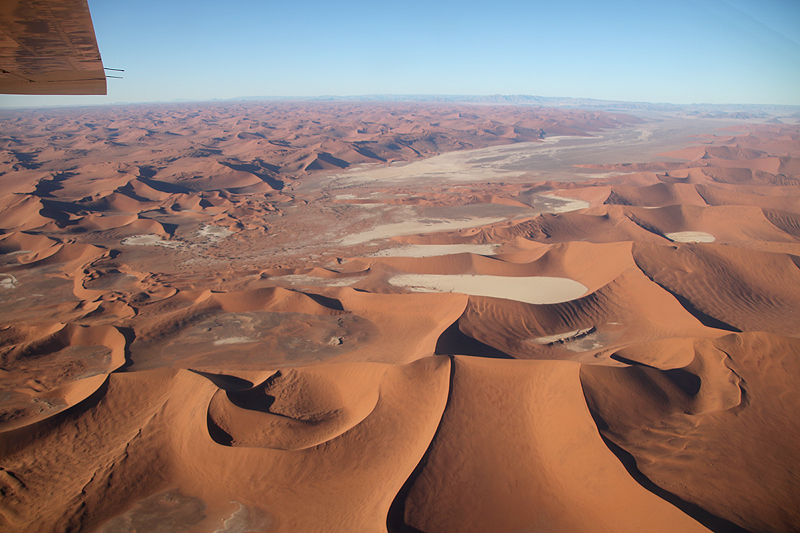There the central Namib with its dune sea and its gravel planes; here the Naukluft with its mountain plateau, its valleys and gorges as well as its springs, creeks and kolks (scours). In the Namib animals such as South African oryx antelope (Oryx gazella), springbok (Antidorcas marsupialis) or ostrich (Struthio camelus), adapted to life in drylands; in the Naukluft mountain specialists such as chacma baboon (Papio ursinus), klipspringer (Oreotragus oreotragus) and Hartmann’s mountain zebra (Equus zebra hartmannae).
Different reasons
The central Namib was declared a nature reserve as early as 1907, during the German colonial era (1884 – 1915), that is. However, the colonial administration’s concern allegedly was not only the protection of the flora and fauna. The Namib Desert Park probably also served as a control area around the British exclave Walvis Bay.
The Naukluft, by contrast, has only been under conservation since 1968. The mandatory power South Africa founded the Naukluft Mountain Zebra Park primarily to create a sanctuary for the Hartmann’s mountain zebra. This zebra species is nearly endemic, so it occurs almost only in Namibia.
Eleven years later, the two parks were merged with additional state-owned land to the Namib-Naukluft Park. That is how in 1979, exactly 40 years ago, a 49,768 km² nature reserve emerged – the largest in Namibia and one of the largest in Africa.
Although quite different, the two habitats belong together. The animals are moving back and forth: The Oryx is looking for grass on the slopes of the Naukluft Mountains, when it does not find any on the plains of the eastern Namib. The same applies vice versa to the mountain zebra, which migrates from the Naukluft mountain range to the plains in case of scarce pasture.
For the Naukluft, the merger proved to be a blessing, because the Sossusvlei amidst the sand dunes of the Namib became the main attraction of the Namib-Naukluft Park. Almost every one of the tens of thousands of tourists per year visiting Namibia for the first time wants to see it.
The Naukluft, by contrast, is still considered a hidden gem. With its diverse mountain landscapes, more than 50 mammal species and about 200 different birds, it is a true paradise – for lovers of nature, birds and plants, who are looking for tranquillity and peacefulness and would rather avoid the travel hype.
Nature’s paradise: BüllsPort
Stretching from the plains at the foot of the mountains to the Naukluft plateau, the 100 km² area of BüllsPort is bordering the national park. On 14 hiking trails [Link: https://buellsport-naukluft.com/en/experiences/], including the Quiver Tree Gorge Trail, well-known to hikers, guests can explore the charming alpine world of the Naukluft. Riding enthusiasts, mountain bikers and fans of four-wheel-driving will get their money’s worth, too.
Newsletter “Naukluft Mail”
Straight from the Naukluft to your mailbox: News, information and exciting stories about the guest business and farm operations of BüllsPort, as well as the mountains of the Naukluft. Subscribe to our quarterly newsletter “Naukluft Mail”.




